Last year, The Ophthalmologist launched its annual Recognizing Global Educational Impact feature to celebrate those institutions and programs that are leading the way in tackling global health inequality, spanning Mexico City to the Indian subcontinent. This year, we add six more entries to this prestigious roll call, from an institution with nearly 200 years of history to a program providing low-cost but versatile devices to low- and middle-income countries.
Although they vary significantly in size and scope, each new entry shares the common goal of making global access to eye care and ophthalmology training more equitable and affordable – drawing new generations from diverse backgrounds into the profession and fostering cutting-edge technologies that bring treatment advancements to some of the world’s poorest areas.
Arclight Project
Location: University of St. Andrews, UK
The Arclight Project, based at the University of St. Andrews' School of Medicine, is a social enterprise that aims to support health workers in low- and middle-income countries by equipping, training, and empowering them to diagnose and manage eye and ear diseases with confidence. The centerpiece of the project is the Arclight: a compact, all-in-one ophthalmoscope, loupe, and otoscope specifically designed for low-resource settings, and for training or backup purposes.
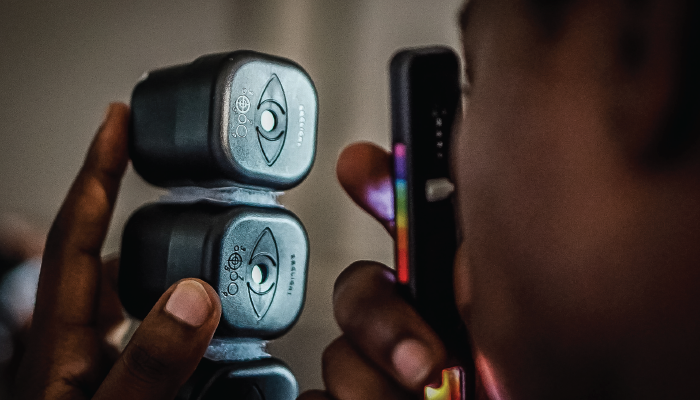
The Arclight is specifically designed for low-resource settings
The Arclight benefits users from students and novice health workers to experienced specialists. It eliminates the need for replacing bulbs or worrying about dead batteries, and can be attached to a smartphone camera to capture clinical images. The design allows for easy examination of the optic nerve, eardrum, anterior segment of the eye, eyelids, and skin, and possesses LED illumination that ensures accurate diagnoses with minimal infrared and ultraviolet exposure. For ear examinations, users can also insert the speculum to clearly view the ear canal and tympanic membrane.
“The Global Health Team at St. Andrews has played a significant role in its development through research and training, collaborating with eye care NGOs to empower healthcare workers in diagnosing and managing eye and ear diseases,” says Karsten Paust, practicing ophthalmologist in Bonn, Germany. “Over 40,000 Arclights have been distributed worldwide with Arclights in use in all six continents – including Antarctica!” The Arclight Project has established training workshops across the globe and collaborated with institutions such as TanZanEye, which teach community level nurses in remote western Tanzania to identify eye disease and refer cataract cases.
Conditions such as diabetic retinopathy and retinopathy of prematurity are becoming increasingly prevalent in low- to middle-income countries, where screening programs are often limited and resources are scarce. Gaining access to traditional medical instruments, in this regard, can be challenging. This is why Arclight is particularly promising: its low-cost, easy-to-use and offers a solar-powered function that doesn’t require ongoing consumables. The WHO has even recommended the device in its newborn eye care guidelines and is featured as an International Approved Supplier for the Prevention of Blindness, according to Paust.
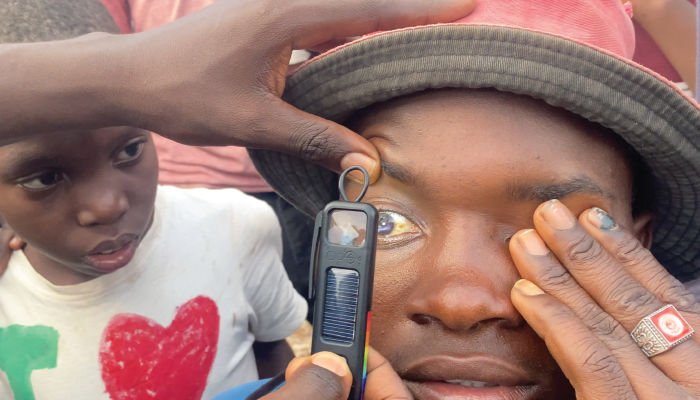
The Arclight is low-cost, easy-to-use, and offers a solar-powered function that doesn’t require ongoing consumables.
The device is sold for profit in high-income countries to subsidize provision and training in those parts of the world where it can have the most impact.
John A. Moran Eye Center
Location: University of Utah, Salt Lake City, USA
First envisioned in 1979 as a division of the University of Utah’s Department of Surgery by ophthalmologist and cornea specialist, Randall J. Olson – who subsequently constructed the first Moran Eye Center building in 1993, aided by a major donation from University of Utah alumnus and namesake John Moran – the John A. Moran Eye Center has witnessed many extraordinary developments within its walls.
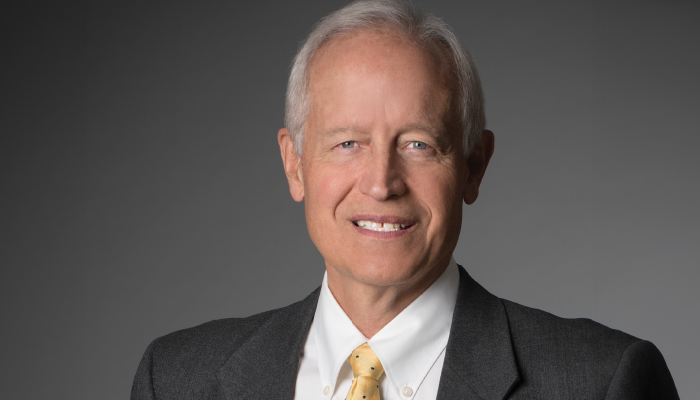
Randall J. Olson, CEO of the John A. Moran Eye Center
The center created the Moran Global Outreach Division in 1994, which aims to give greater accessibility to eye care and surgical services for underserved populations around the world. To date, the Outreach Division has provided volunteer eye care services in more than 25 countries, training local ophthalmologists and health care workers, as well as providing cataract surgeries and vision screenings specifically in areas where access to quality health care is limited.

Credit: Adobestock.com
Known for its strong emphasis on education and training, the Moran Eye Center offers highly competitive residency and fellowship programs, and is committed to training the next generation of ophthalmic researchers and ophthalmologists. This training also includes reaching out to other educational institutions. “Jeff Pettey – Professor and Clinical Vice-Chair of the Moran Eye Center Department of Ophthalmology and Visual Science – and the Moran Eye Center are leading the US effort in this area,” says Thomas Oetting, Clinical Professor of Ophthalmology and Visual Sciences at the Carver College of Medicine, University of Iowa. “They have guided our starting program at the University of Iowa and many other institutions. Dr Pettey started the global ophthalmology conference together with the American Academy of Ophthalmology, which has helped colleagues in this area gather to learn new skills and tricks.”
Closer to home, the center’s local outreach work focuses primarily on the Salt Lake and Summit counties, as well as on the Navajo Nation – in conjunction with the Utah Navajo Health System – of southern Utah. In this work, the team directs their attention to underrepresented populations of the US healthcare system, such as those experiencing homelessness, those without insurance, and former refugees.
In 2021, the center set up the Alan S. Crandall Center for Glaucoma Innovation. Directed by The Ophthalmologist Power Lister and MIGS powerhouse, Ike Ahmed, the center is focused on leading the way to provide better diagnostics, more effective and safer therapies, more advanced surgical devices, and a deeper understanding of glaucoma and its genetic complexities. The center pursues four key initiatives to achieve this aim: Glaucoma Therapeutics, Translational Research, Neuroprotection-based Therapies, and Global Care.
Moran’s Global Outreach Division is focused on training physicians across Africa. Led by Initiative Director, Craig J. Chaya, the team established a glaucoma fellowship training program in Tanzania in 2023, and are currently training three physicians in the region, as well as hosting Tanzanian medical professionals at their base in Utah and beginning a series of remote surgical mentorship training sessions.
Moran’s outreach work in Africa also covers Ghana – where for almost two decades the center has trained surgeons at the Komfo Anokye Teaching Hospital (KATH) in Kumasi – Ethiopia, Kenya, and South Sudan, where the Outreach Division is involved with providing much-needed cataract surgeries.
John H. Stroger Jr. Hospital of Cook County
Location: Chicago, Illinois, USA

Based in Chicago, Illinois, the John H. Stroger, Jr. Hospital of Cook County offers a highly regarded Ophthalmology Residency Program to four applicants each year through the San Francisco Matching Program, an initiative aimed at matching ophthalmology residency applicants to training programs. Known for its high patient volume, Cook County’s program treats around 50,000 patients every year, performing over 2,300 major ocular surgeries and providing its selected residents with significant exposure to the complex orchestrations of eye surgery.
The four-year program is specifically designed to train residents in becoming skilled comprehensive ophthalmologists and subspecialists, and offers a wide range of ophthalmic subspecialties, including cornea, glaucoma, neuro-ophthalmology, oculoplastics, pediatric ophthalmology, retina/vitreous, and uveitis.
“As a resident graduate of this program, I can personally attest to the high surgical volume and the invaluable opportunity to work with cutting-edge technology,” says Nadezhda Bolton, a board-certified ophthalmologist now based in Tucson, Arizona. “The mentorship provided by the attending staff extends well beyond graduation, as they continue to support and guide former residents throughout their careers. This enduring commitment to professional development is matched by their active involvement in research and contributions to the broader ophthalmology community.”
The hospital also prides itself on its approach towards diversity. As Bolton notes, “The clinic's diverse team of residents and attending staff, who come from various cultural and ethnic backgrounds, enrich the training environment and foster a culture of inclusion and understanding.”
“With one of the most diverse populations in the country, we ensure each patient is taken care of in a way that makes them comfortable — [by providing] either doctors who speak their language or access to translators 24/7,” says Dagmara Danek, an ophthalmologist at the hospital.
Shweta Chaudhary, another ophthalmologist employed by Cook County, adds: “We take care of patients from all parts of the world with serious ocular illnesses, irrespective of their race, ethnicity, gender, socio-economic status and ability to pay. We train the next generation of Ophthalmologists in house and across the globe, by giving them training in low-resource settings where they learn to manage serious eye conditions medically and surgically with available resources.”
ICEE is primarily geared towards addressing educational disparities and supporting innovative educational programs across the county. The fund is driven by alumni donations, which are tax-deductible, to ensure residents can continue contributing to advancements in ophthalmology without financial constraints.
Cook County continues to play a significant role in ophthalmology, both domestically and globally. Residents – alongside members of other academic medical centers – recently traveled to Guatemala to deliver eye care services to underserved populations in the country. The residents receive hands-on clinical experience, particularly in cataract and pterygium surgery, while also exposing them to a range of complex cases not commonly seen in the US.
Sankara Nethralaya
Location: Chennai, India
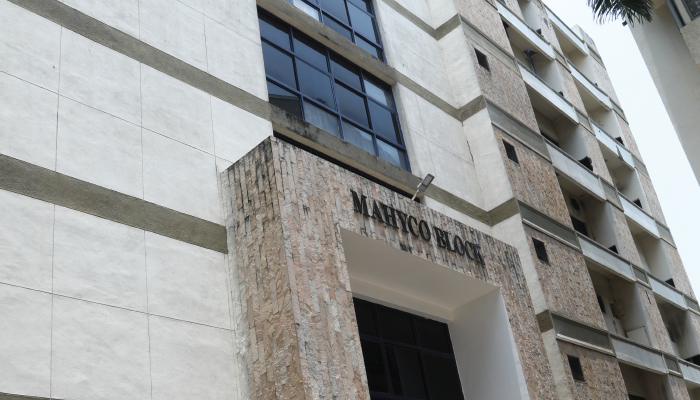
Image supplied by Sankara Nethralaya
A non-profit ophthalmology institute based in Chennai, India, was rated as one of the top specialized hospitals in the world by Newsweek in 2020.
Founded in 1978 by the late Indian ophthalmologist, Sengamedu Srinivasa Badrinath, an elected fellow of the National Academy of Medical Sciences, the institute was intended to provide high-quality and affordable eye care to people from all walks of life.
Sankara Nethralaya is equally focused on the promotion of research and training in ophthalmology – since its inception the center has offered fellowship programs in oculoplasty, glaucoma, uvea, cornea, vitreo-retinal surgery, and general ophthalmology to postgraduate students, as well graduate training programs.
“The institution has given the country some of the finest ophthalmologists and has elevated the standard of eye care in the Indian subcontinent by training numerous ophthalmologists and optometrists,” says Shikha Bassi, Deputy Director of the Department of Neuro-Ophthalmology at Sankara Nethralaya’s headquarters in Chennai.
Since the 1990s the institute has expanded its reach across India, and now has 11 branches located in various regions around the subcontinent.
Sridhar Baratan, who undertook a fellowship at Sankara Nethralaya and then worked for eight years performing high-volume cataract surgeries for the center, says, “I had the privilege of being… part of the pioneering team that conceptualized a Mobile Eye Surgery Unit, in collaboration with IIT [Indian Institute of Technology] in Madras, and this endeavor has given vision to 500,000 patients – and counting – in multiple states in India.”
Established in 2011 by Healthcare Technology Innovation Centre (HTIC) before being passed on to Sankara Nethralaya in 2012, the Mobile Eye Surgical Unit (MESU) is composed of two surgically-equipped buses – which jointly house a sterilization chamber, an anesthetization area, a patient monitoring area, a surgical instrument packing and cleaning area, and an operating theater – that travel to underserved and remote regions within the states of Tamil Nadu, Andhra Pradesh, and Jharkhand.
The buses – one aimed at surgeon and patient preparation, the other known as the surgical vehicle – can be connected by a retractable vestibule, recreating the type of setup one would ordinarily only see in a tertiary care setting. The MESU offers free, high-quality cataract surgeries (one of the leading causes of blindness in India) in remote villages across these three states , with a diesel generator providing power to all electrical equipment in the units. By March 2020, MESU reported that over 16,000 surgeries have been performed by the unit across more than 12 surgical camps.
Syrian American Medical Society
Location: Washington, DC, USA
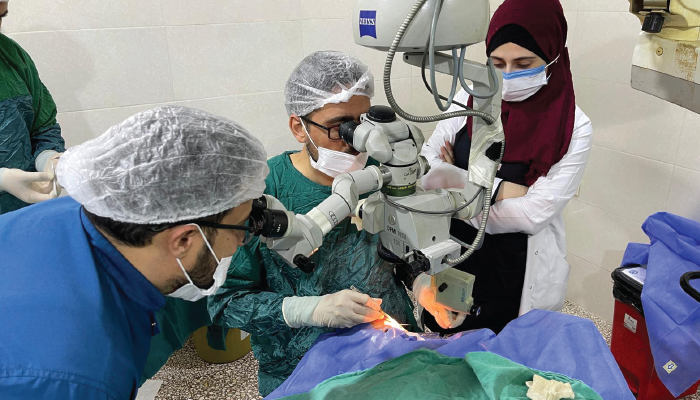
SAMS launched the Surgical Vitreoretinal Fellowship at the Retina Institute in northern Syria. The Retina Fellows in northern Syria work closely with the Syrian American physicians based in the United States. Credit: Syrian American Medical Society
Founded in 1998 by Syrian and American healthcare professionals, the Syrian American Medical Society (SAMS) is a non-profit organization that was originally intended to provide medical treatment to those affected by the crisis in Syria. Since the outbreak of war in the country in 2011, the organization has shifted its focus to providing humanitarian aid and health care delivery to underprivileged Syrian refugees, internally displaced persons, and any other individuals caught up in zones of conflict and displacement.
Since its creation, the non-partisan society has implemented over ten residency training programs in northern Syria, the region most severely impacted by the war. “Many of these residency programs are managed by local physicians with mentoring and remote supervision from SAMS physician members based in the United States,” explains Syrian-born retina specialist, Aref Rifai, who takes regular volunteering eye care missions with the organization.
Most recently, SAMS launched their Surgical Vitreoretinal Fellowship, a fellowship based in a tertiary care hospital in northern Syria. “The program is a one-year program devoted to clinical training in the diagnosis of vitreoretinal patients and surgical management of vitreoretinal diseases,” says Rifai. “The retina fellow, based in northern Syria, works closely with the Syrian American physicians based in the United States, through virtual lectures [and] scheduled on-site clinical visits.”
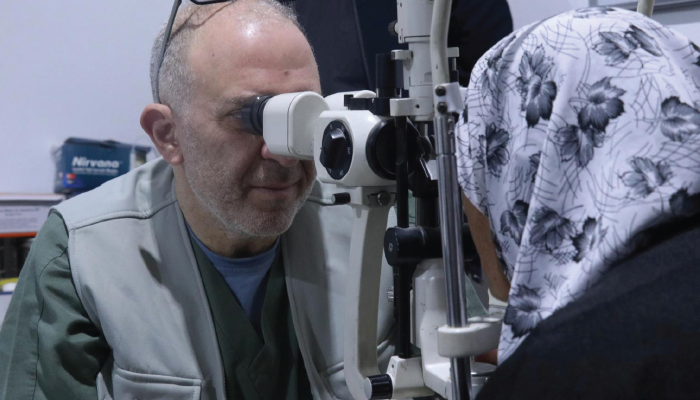
Credit: Syrian American Medical Society
SAMS is now involved with launching a retina center in the region, where graduate fellows will receive a certificate of completion and then serve as a member of the academic team. “They will become a Surgical Retina Attending for three years, to help supervise and become mentors for the next cohort of fellows,” Rifai says. “This will provide medical and surgical retina services to a large cohort of refugees with limited access to such specialized services”
A SAMS-supported ophthalmology center has also been established in Kafr Lusin, a village in northern Idlib, Syria. The center serves a high volume of patients, including many internally displaced persons, and provides specialist care and medication to those otherwise unable to afford or access eye care services.
SAMS has been working in partnership with the Emory Eye Center, Atlanta – as well as international NGO Medecins Sans Frontieres, and UNHCR (the UN Refugee Agency), who make patient referrals to the team – to deliver eye care to locations like Za’atari, the largest refugee camp in Syria, which houses more than 80,000 refugees, the majority of whom are children. The multi-institutional team provides cataract surgeries, laser procedures, and eye injections, and has set up a pediatric screening program at the camp.
Politically neutral, SAMS continues its mission to protect the eyesight of all civilians in the unpredictable environs of a warzone.
University of California San Diego and Shiley Eye Institute
Location: La Jolla, California, USA
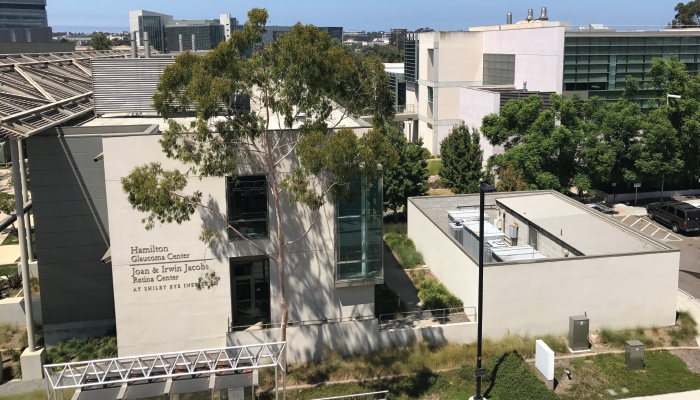
Shiley Eye Institute, University of California San Diego
The Department of Ophthalmology at the University of California, San Diego (UCSD), began its journey in 1983 with a modest, three-room clinic. Today, its Shiley Main Building, New Shiley Wing, Ratner Children's Eye Center, Jacobs Retina Center, and Hamilton Glaucoma Center spans 91,000 square feet. It stands as the only academic institution in the San Diego area with comprehensive programs for the clinical care of patients with eye disorders, advanced research on surgical techniques and treatments of eye diseases, and education in ophthalmology.
The institution has several clinical programs, including the UCSD EyeMobile for Children, which has completed over 225,000 vision screenings in underserved communities at the US-Mexico border region and has provided free comprehensive eye exams and glasses for those in need. Giving student interns the opportunity to assist with providing these services, the program has inspired many of them to pursue careers in ophthalmology.
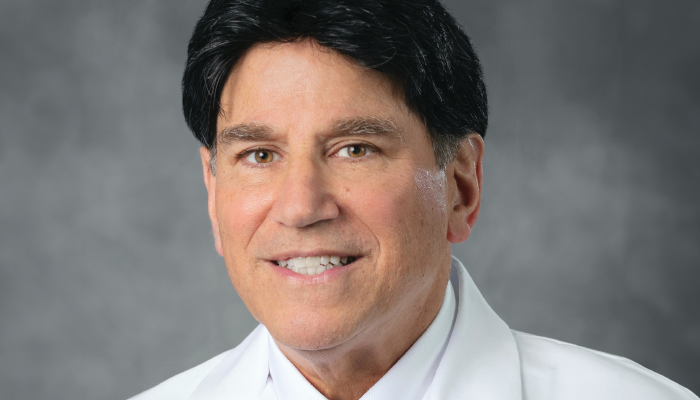
Robert N. Weinreb, Chair and Distinguished Professor of Ophthalmology at the Shiley Eye Institute
Trainees mentored by faculty can participate in a free clinic. According to Robert N. Weinreb, Chair and Distinguished Professor of Ophthalmology at the Shiley Eye Institute, “the majority of UCSD medical students who have entered ophthalmology and worked in the Free Clinic cite this experience as a major factor in influencing their specialty decision.” Diversity, in this regard, is something the institution holds dearly. “In all UCSD training programs, there is a strong emphasis placed on trainee diversity, including those from populations under-represented in medicine and research, and global reach,” Weinreb adds.
The current academic year alone has trainees from a wide range of countries, including Mexico, Saudi Arabia, Poland, Thailand, Lebanon, Malaysia, Turkey, The Philippines, Ghana, and Nigeria. Many prior trainees now serve as leaders and department chairs across the world.
UCSD has also been selected for a National Institutes of Health (NIH) initiative that supports a year-long training program at the intersection of Ophthalmology and Artificial Intelligence/Data Science. This pairs trainees with mentors to foster the next generation of ophthalmologists and vision scientists.
